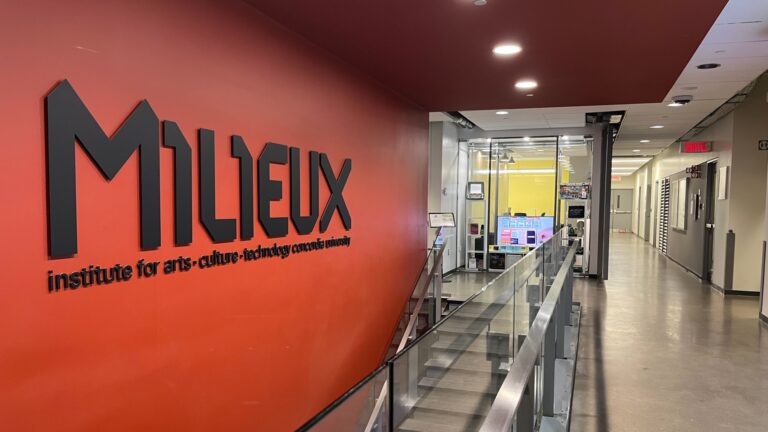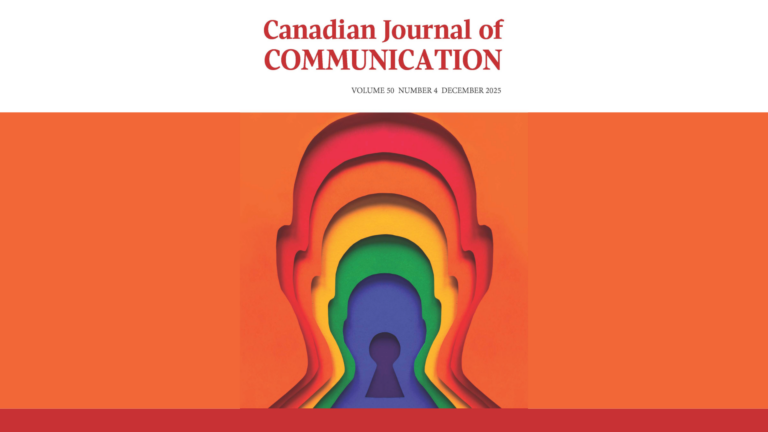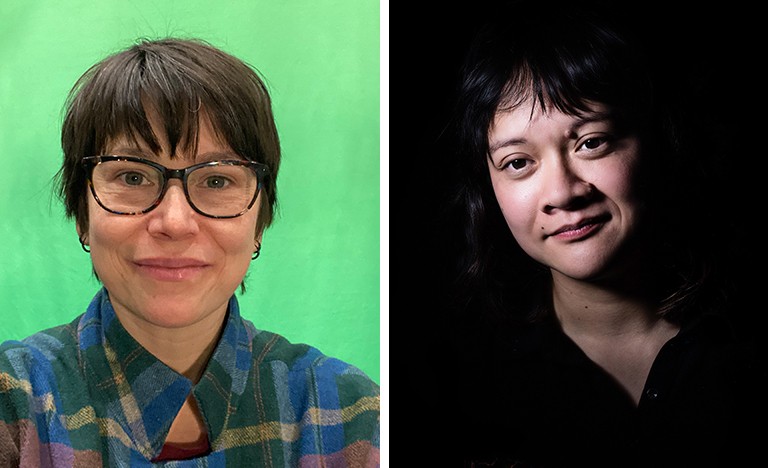Suzanne Kite is new to Montreal, but her interdisciplinary performance work is right at home in Milieux’s research-creation ecosystem. She arrived as an affiliate of the Initiative for Indigenous Futures, and her work has overlap all over the cluster map: Textiles and Materiality, Speculative Life, and le PARC, Milieux’s new performing arts research cluster.
“My work focuses on diasporic Indigenous epistemologies,” she explained. “By diasporic, I mean separated from traditional territories — either by adoption or through the Indian Relocation Act” (an American law passed in 1956 meant to encourage Indigenous people to leave reserves and assimilate into urban areas). Kite is Oglala Lakota, and hopes to conduct field work during her PhD in the Oglala community of South Dakota, where some of the members of her family live.
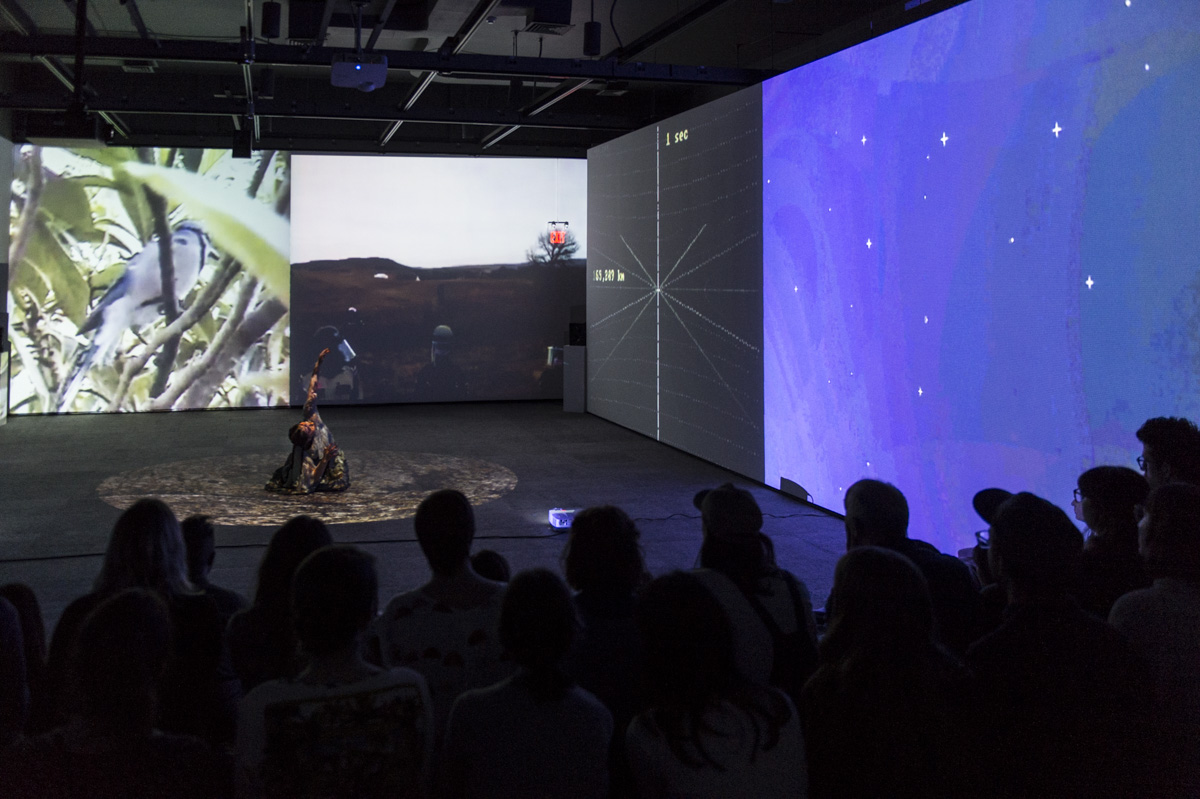 A still from Kite’s 2017 performance installation “Everything I Say is True.”
A still from Kite’s 2017 performance installation “Everything I Say is True.”
Her work takes the form of multimedia performance, and has included projector arrays, speakers, sculpture and wearable electronic sensors. “There are interactive aspects. Sometimes, it’s been a lecture,” she says. Kites’ supervisors are Jason Lewis, Professor of Design and Computation Arts, Concordia Research Chair in Computational Media and the Indigenous Future Imaginary and co-Director for the Initiative for Indigenous Futures; Heather Igloliorte, co-director of the IIF and Concordia University Research Chair in Indigenous Art History and Community Engagement; and Joanna Berzowska, Associate Professor of Department of Design and Computation Arts and research director of XS Labs.
Kite is originally from South Orange County, California, but arrives at Milieux on the heels of completing an MFA at Bard College’s Milton Avery Graduate School. An invitation from IIF Director Jason Lewis prompted Kite to visit Milieux last year and, for the first time, consider pursuing a PhD. “Artists don’t usually get PhDs, but I see it as the logical next step if I want to engage with deeper research when making my work, and to actually develop ideas. I feel like the pieces that I’ve made deserve a longer period of gestation. And I’d like to think in terms of a larger umbrella of works. The lifecycle of artwork can be pretty brutal. I’ve been making one huge piece a year and it would be better if I could move a little slower,” she said.
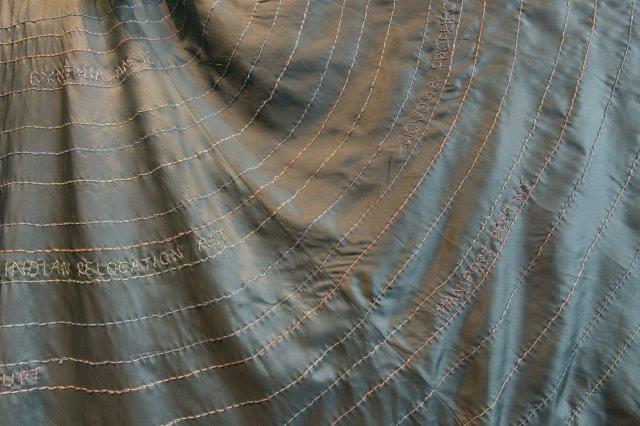 An embroidered dress that made up part of “Everything I Say Is True.”
An embroidered dress that made up part of “Everything I Say Is True.”
Kite is still settling in and getting oriented in her new home, but she is interested about cross-cluster collaboration once she has her bearings. “What I see overall in the institute is that there’s a baseline of related studies that will make it easy to find collaborators or engage on different subjects,” she said.
“There aren’t specifically Indigenous performance art courses, so I’m ready to open up and learn from the community.”
See more of Suzanne Kite’s work here.

